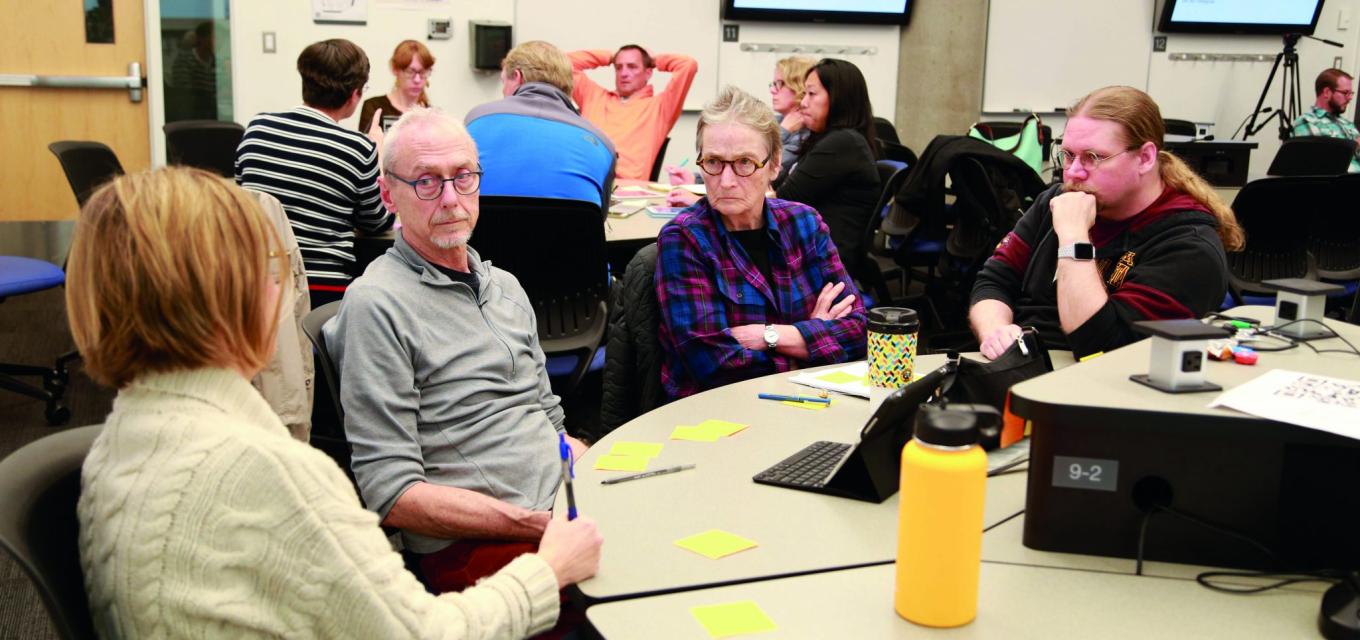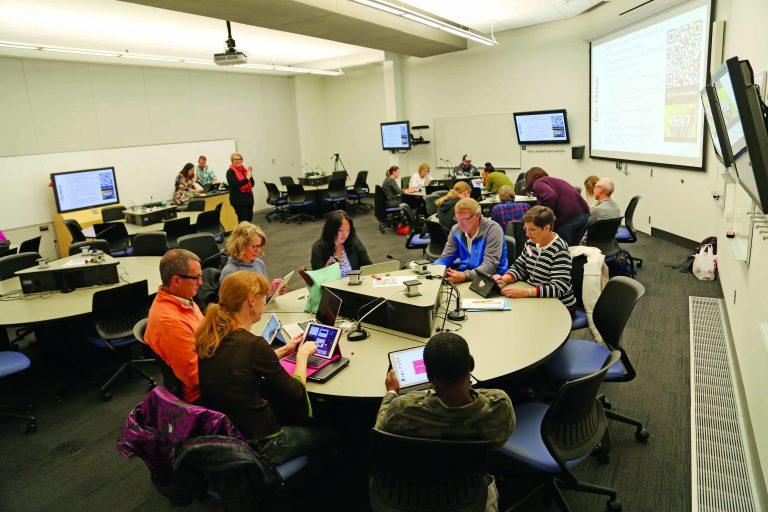News

Assisting teachers with tech
The TETI program gives educators the necessary tools to effectively implement technology in the classroom.
A few years ago, the Minnesota Department of Education found that 55 percent of Minnesota school districts had programs where students worked with some kind of digital device, such as an iPad or Chromebook. Last year, with many students in remote learning, that number grew substantially. Increased technology use in the classroom means that educators need to have the skills necessary to effectively implement these tools. That’s where the Teacher Educator Technology Integration (TETI) initiative comes in.
CEHD launched TETI as a pilot program in 2017 through a grant from the Bush Foundation. Initially, it involved 27 teacher educators and 125 teacher candidates in four program areas, including arts in education, elementary education, science education, and special education.
“Schools and districts wanted to focus more on technology integration [meaning the incorporation of technology seamlessly into the curriculum],” says Joshua Leigh, who coordinates the TETI initiative. “A lot of instructors do a great job with areas they are experts in, but are not confident modeling good technology integration practices. TETI was created to provide coaching and support.”
In the TETI pilot, teacher educators and candidates were given an iPad. Teacher educators also took part in workshops on how to add technology into their curricula. “This approach allowed for teacher candidates to have technology modeled throughout their teacher education courses,” Leigh says.
The results of the pilot program were impressive. Ninety-one percent of the teacher educators found TETI effective or very effective in giving them the skills and understanding they need to successfully integrate technology in the classroom.
Since then, the program has grown considerably and is now found in 13 licensure areas. It has also moved beyond iPads to embrace other tech. “We wanted to make it applicable to any new tool,” Leigh says. “We want teacher candidates to be able to use technology integration practices that apply to any devices a school might use.”

Leigh adds that it’s important to remember that the technology is used to supplement good instruction, not to replace it. “Our philosophy is to let the pedagogy lead and the technology follow,” he says. “What we are doing maintains recommended learning practices and sound instructional teaching. We are never proponents of using technology just because it is there.”
Barbara Billington, a senior lecturer in the Department of Curriculum and Instruction (C&I) who works in the science education program and serves as its licensure program lead, has been involved with TETI since its inception. “I got involved right away because I needed to rethink my own technology integration,” she says.
C&I lecturer Jana LoBello Miller, the elementary teacher education co-director and co-licensure program lead, says that when her program was asked to participate, she remembers asking questions about how TETI aligned with her program area’s commitments to equity and social justice.
Although many of the teacher candidates were on board with the program right away, there were some initial doubters. Betsy Maloney Leaf, C&I lecturer and arts in education co-licensure lead, says some of her teacher candidates coming from professional practice were very skeptical about the overlap of technology and the arts—which they perceived as an affront. “Sometimes technology seems threatening to body-based artistic practices, such as dance, theater, and visual art, because there’s an assumption technology gets in the way or degrades embodied skills, techniques, and tools,” she says. However, the students’ wariness ended up leading to a larger conversation of equity and access. “That opened them up to the possibility of an arts classroom technology pedagogy. That was particularly helpful,” Maloney Leaf says.
“We want teacher candidates to be able to use technology integration practices that apply to any devices a school might use.”
Billington says she’s noticed a similar hesitance among the science candidates. “We’ve been focused this semester on student talk and how students talk about science concepts, how they share their ideas, and how they use their devices to model their science conceptions. Teacher candidates tend to wonder whether sixth-graders can do this effectively or are we asking too much. My answer is ‘have you tried it yet?’ Quite often our kids will rise to the occasion. It does require a frame shift in how we as a culture interpret devices in schools.”
As an example, for the past several years, she has been inviting in a science teacher who created a company specializing in interactive learning modules. Using slow motion, high-res cameras, he has demonstrated how students can use his videos to analyze data, such as measuring the velocity of a roller coaster. “This is actual data collection,” she says. “Students really have to understand the data before they can talk about it. Using these modules supports students when they are doing data analysis and explaining science concepts.”
Maloney Leaf says her arts in education cohort is often tasked with creating art using devices. The cohort includes teacher candidates from visual art, theater, and dance, who tend not to see much overlap among their art forms. The group has been invited to explore the Pedicord Apartments installation at the U’s Weisman Art Museum and create a response using their devices. The art piece is a heavily sensorial experience and has inspired candidates’s short films as well as sound choirs using their devices as sculpture. “We made them use their device, created community, and created possibilities how they might use this in their future teaching,” she says.
LoBello Miller says that technology is dedicated in the elementary education program to promoting inclusion and building relationships with parents and families. “We use technology for our students to take a critical look at the ways the devices might support their desires to build more consistent and positive relationships with families,” she says. “Our teacher candidates were finding ways to create spaces online for families to connect with the classroom. They were able to get feedback right away from families.”
This sense of community flows throughout the entire TETI initiative. Billington, Maloney Leaf, and LoBello Miller consider themselves part of a team, which is one of the keys to the project’s success. LoBello Miller says the attentiveness and collaboration among TETI and each of the licensure areas has been incredible. “Having started from the first pilot year, it gets better and faster in response to our specific program goals,” she says. “It just helps our students.”
Photos courtesy of TETI
-Kevin Moe